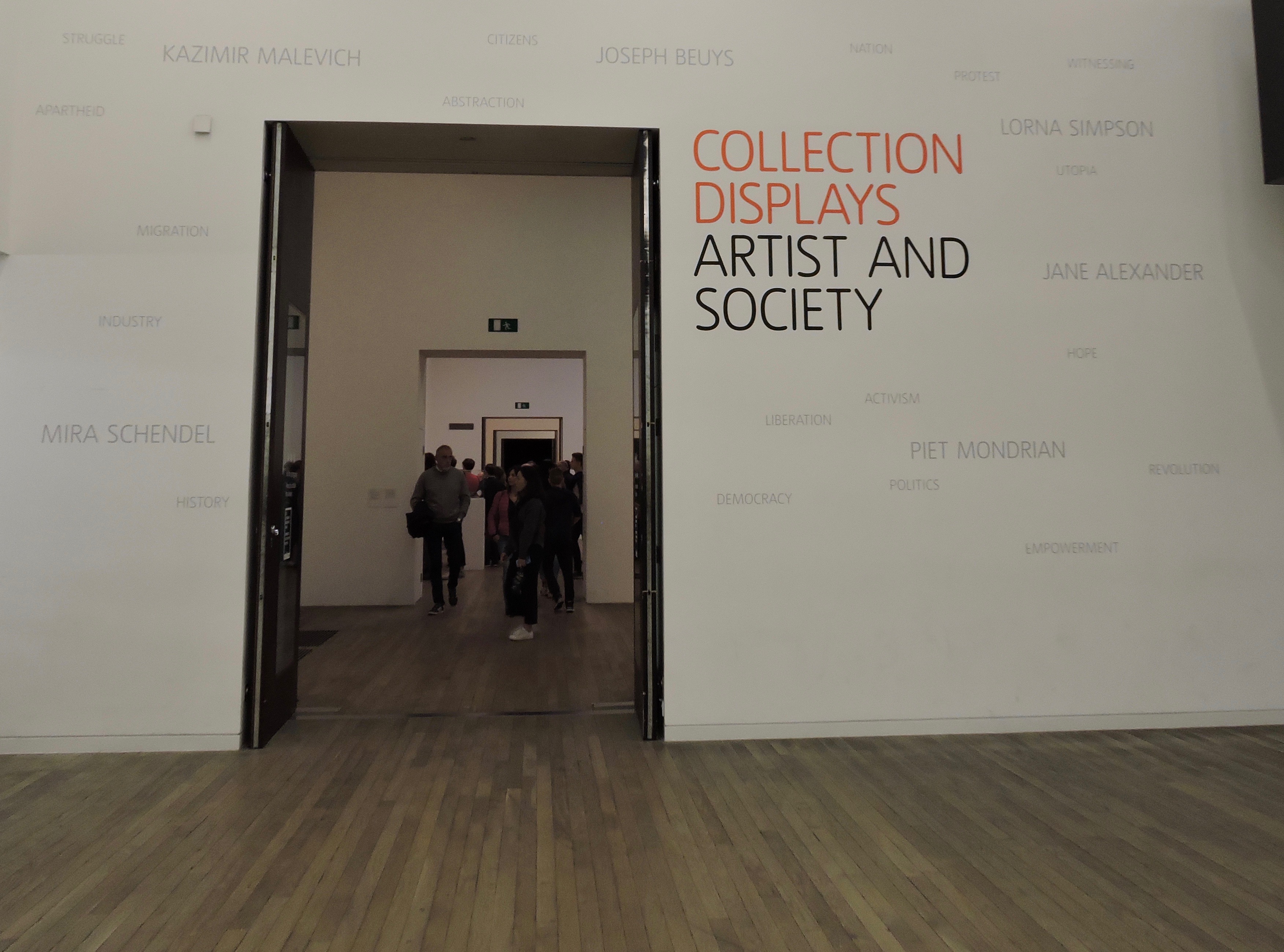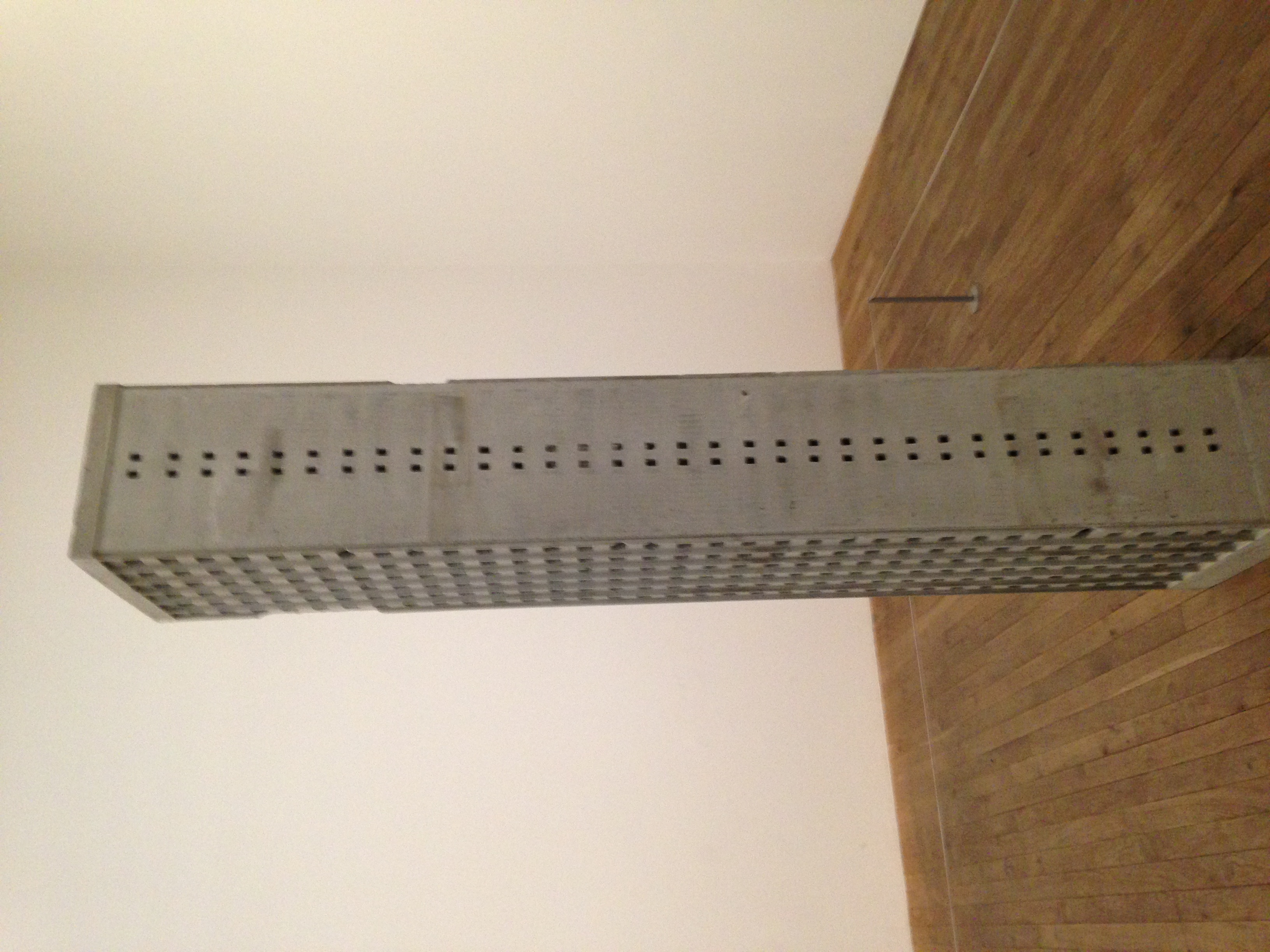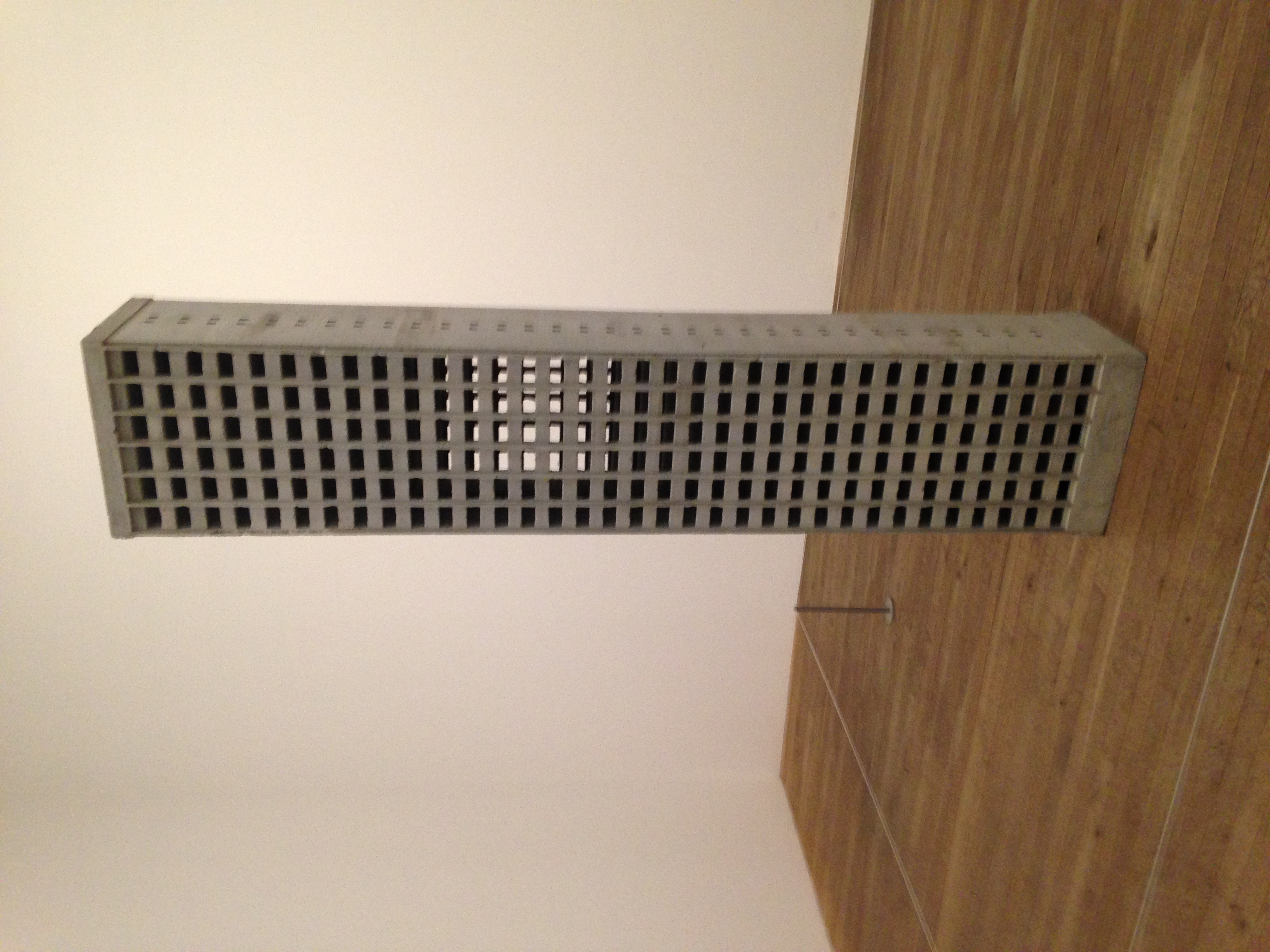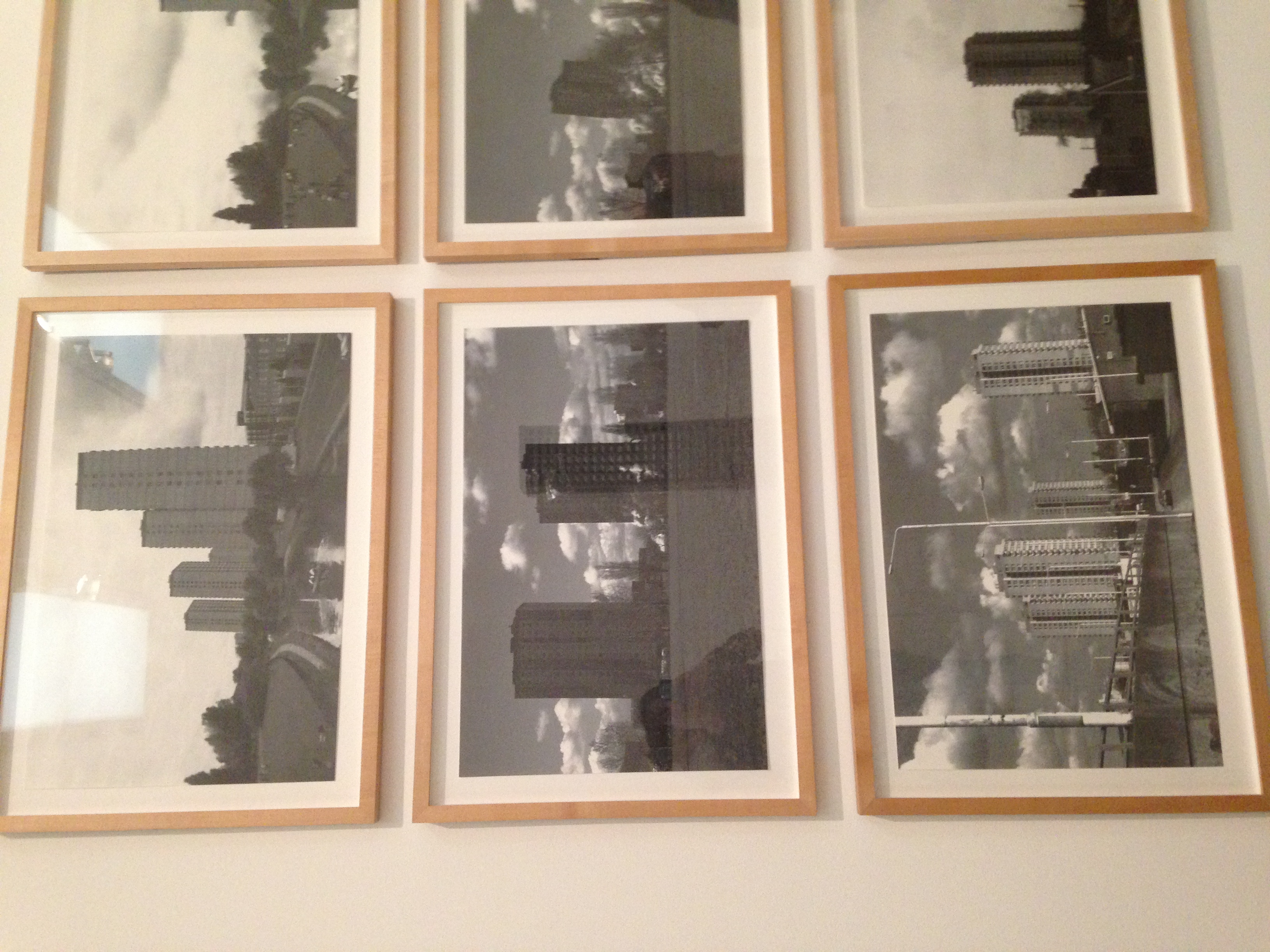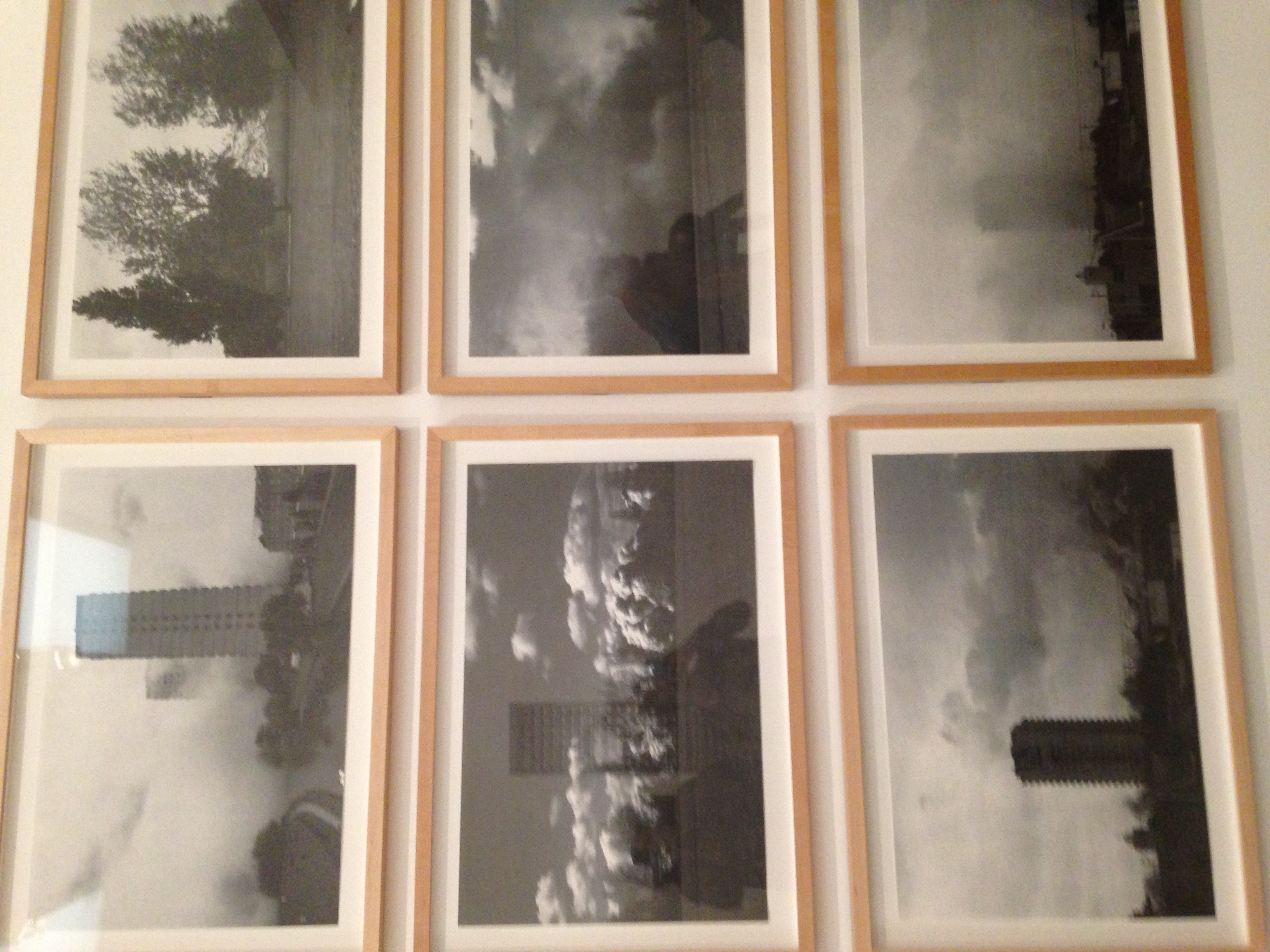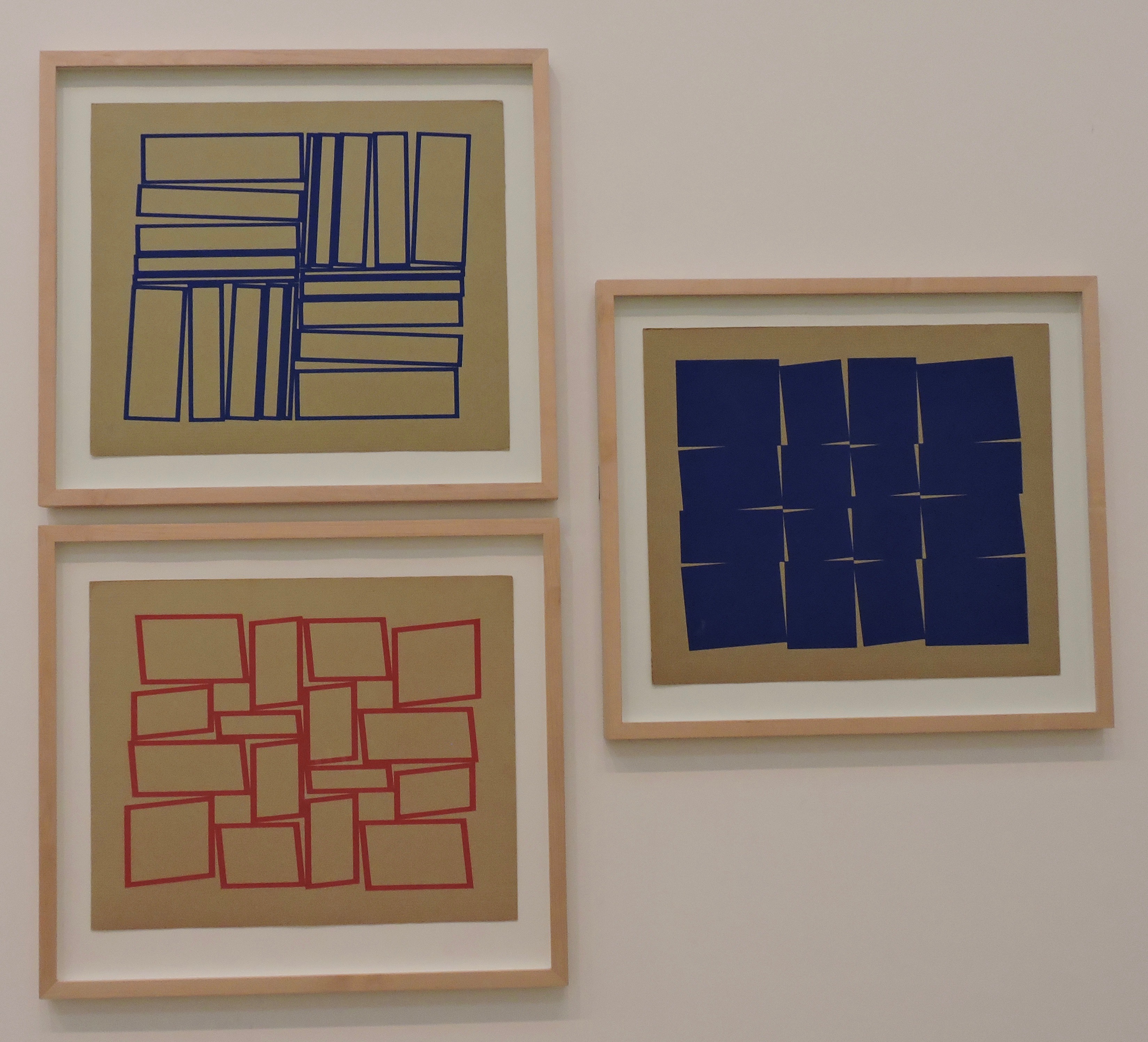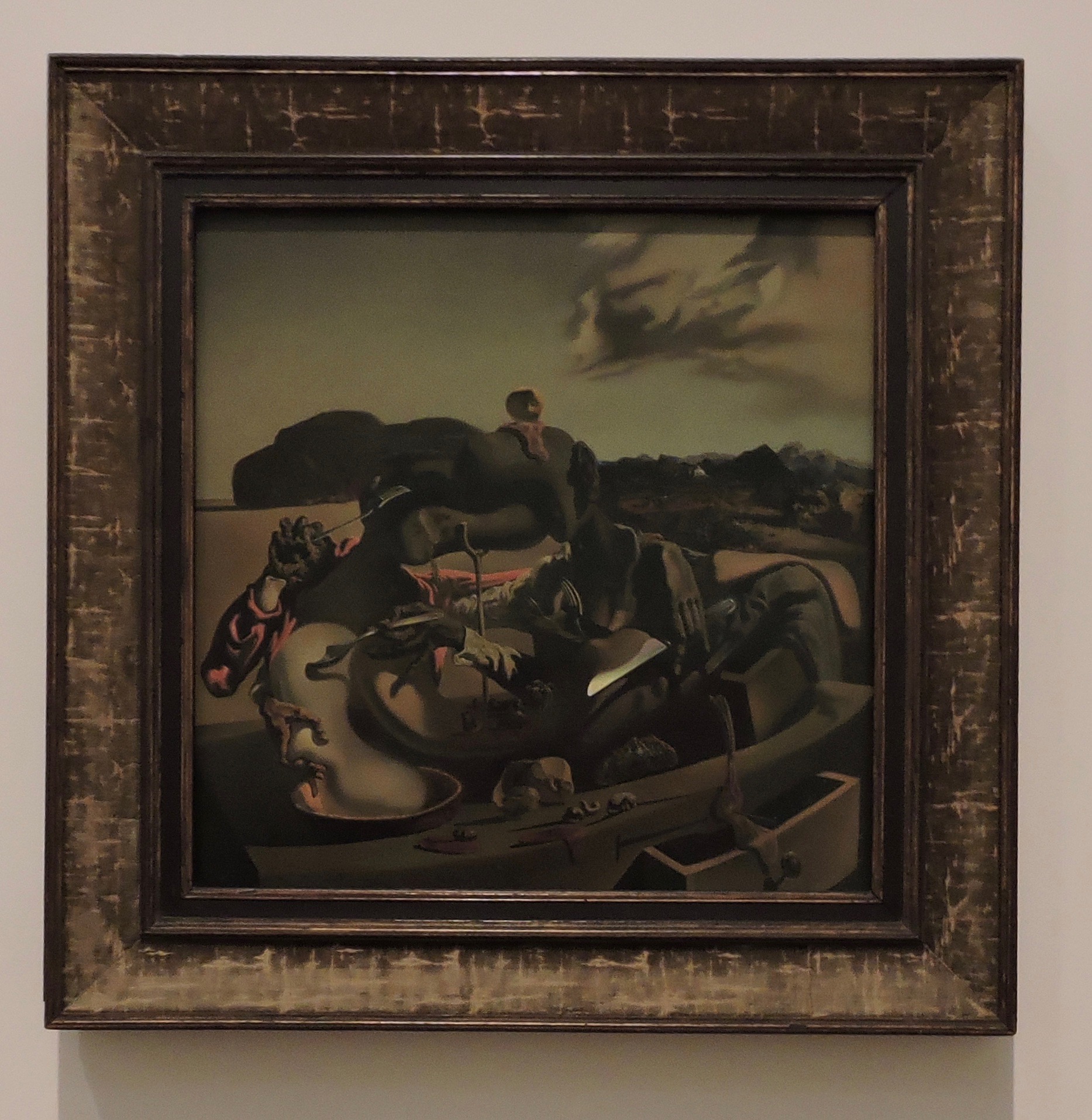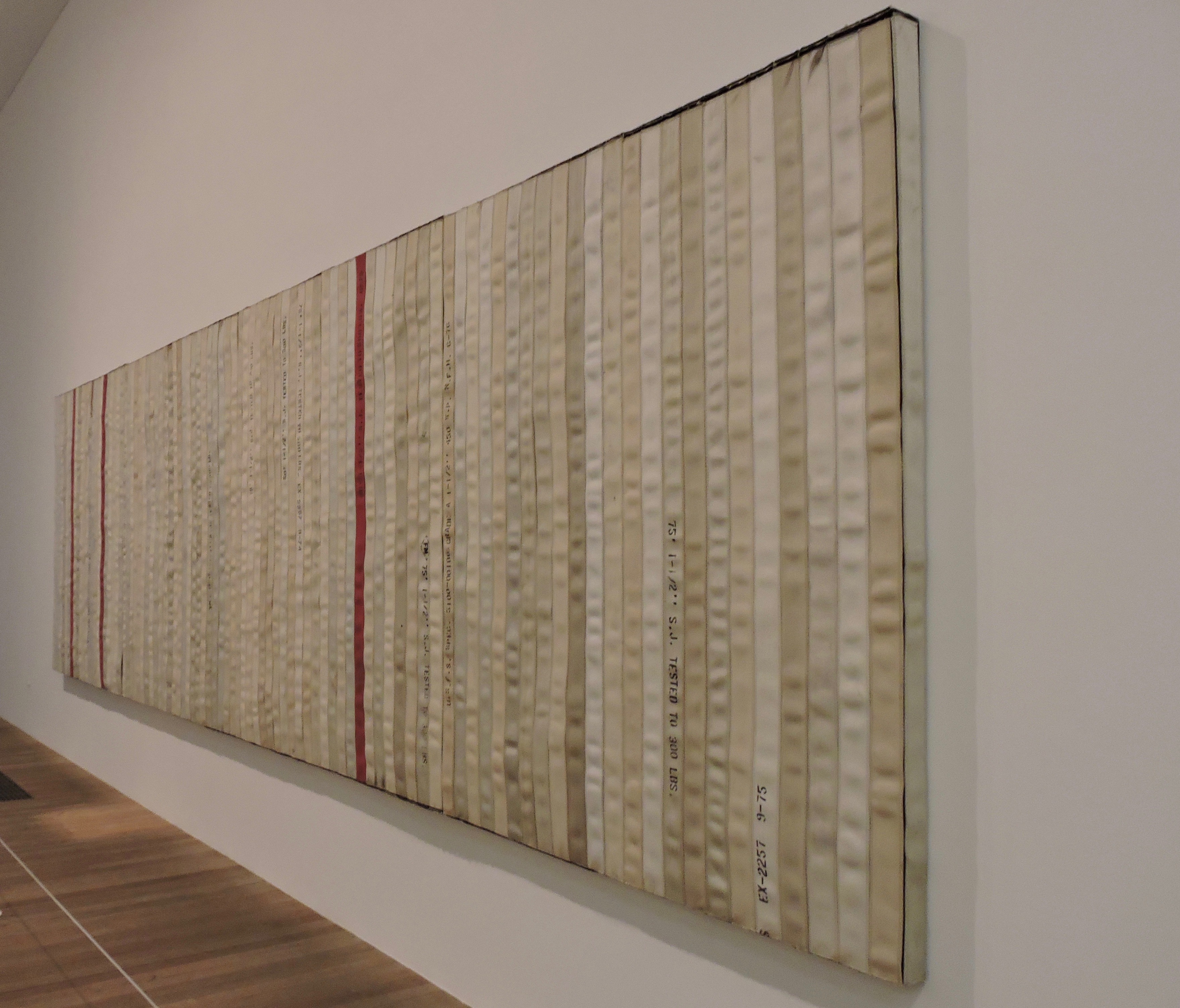Difference between revisions of "Artist and Society"
From Londonhua WIKI
Ekmceachern (talk | contribs) |
(→Rachel Whitread) |
||
| (9 intermediate revisions by 2 users not shown) | |||
| Line 1: | Line 1: | ||
{{Infobox | {{Infobox | ||
| − | |title = | + | |title = Artist and Society |
|header1 = The Chandos Portrait | |header1 = The Chandos Portrait | ||
of William Shakespeare | of William Shakespeare | ||
|bodystyle = width:25em | |bodystyle = width:25em | ||
| − | |image = [[File: | + | |image = [[File:Artist and Society.jpg|x450px|alt=Article Image]] |
| − | |caption = | + | |caption = Artist and Society Collection Entrance |
|label2 = '''Artist''' | |label2 = '''Artist''' | ||
| − | |data2 = Attributed to | + | |data2 = Attributed to Emily McEachern |
|label3 = '''Year''' | |label3 = '''Year''' | ||
| − | |data3 = | + | |data3 = 2017 |
|label4 = '''Dimensions''' | |label4 = '''Dimensions''' | ||
|data4 = 55.2 cm × 43.8 cm ( 21 3⁄4 in × 17 1⁄4 in) | |data4 = 55.2 cm × 43.8 cm ( 21 3⁄4 in × 17 1⁄4 in) | ||
|label5 = '''Location''' | |label5 = '''Location''' | ||
| − | |data5 = | + | |data5 = Tate Modern, London |
<!--Add/Delete the label/data pair lines as needed--> | <!--Add/Delete the label/data pair lines as needed--> | ||
}} | }} | ||
| Line 27: | Line 27: | ||
The art in this gallery raises awareness about both current and past issues of society. The artists try to create a reaction in the viewer of the painting and often are very successful in this manner. The art featured in this collection includes many paintings, photographs, sculptures, and even a few documentaries. This gallery is a permanent section of the museum and is free for anyone to see. Below is more information about specific art and artists featured in the exhibit. | The art in this gallery raises awareness about both current and past issues of society. The artists try to create a reaction in the viewer of the painting and often are very successful in this manner. The art featured in this collection includes many paintings, photographs, sculptures, and even a few documentaries. This gallery is a permanent section of the museum and is free for anyone to see. Below is more information about specific art and artists featured in the exhibit. | ||
<br><br> | <br><br> | ||
| − | == | + | =Featured Art/Artists= |
| + | The art written about in each section can be found in the gallery section at the end of the article. | ||
| + | <br> | ||
| + | ==Marwan Rechmaoui== | ||
| + | In the first room of the collection Marwan Rechmaoi's sculpture ''Monument for the Living'' is on display. This was created in 2001 by the Lebanese artist and is made of Concrete and Wood. The sculpture is a scale model the the Burj El Murr building located in Beirut, Lebanon. The building itself was owned by the El Murr family, which was a very well-known political family. The building was left unfinished, as it appears in the model, in 1974 due to the start of the Civil War. It was intended to be used for offices but because it was never finished it was only used as a sniper outpost. Today the tower is too tall to be knocked down and cannot be imploded because it is too dense. It still stands as a reminder and memorial of the internal conflict of the Civil War that has yet to be fully resolved. | ||
| + | <gallery mode="packed"> | ||
| + | Image:Marwan 1.JPG | ||
| + | Image:Marwan 2.JPG | ||
| + | </gallery> | ||
| + | <br> | ||
| + | ==Rachel Whiteread== | ||
| + | Also in the first room is Demolished, a series of photos by Rachel Whiteread. It shows the destruction of three different housing estates between 1993 and 1995. It is meant to commemorate what no longer exists while pertaining to Whiteread's concern of homeless people in London. | ||
| + | <gallery mode="packed"> | ||
| + | Image:Whiteread 1.JPG | ||
| + | Image:Whiteread 2.JPG | ||
| + | Image:Whiteread 3.JPG | ||
| + | </gallery> | ||
<br> | <br> | ||
| − | |||
| − | |||
| − | |||
| − | |||
| − | |||
| + | ==Naum Gabo== | ||
| + | Naum Gabo's sculpture ''Kinetic Contruction (Standing Wave)'' is currently in the Artist and Society collection. This was constructed in 1919-1920 directly after the Russian Revolution. At this time is was difficult to obtain materials and the machinery necessary to complete things like this. In the gallery the viewer of the sculpture can press a button and the thin metal strip will move to demonstrate a standing wave. This structure was created by Gabo to demonstrate to students how kinetics worked. Gabo believed that space and time were active components of art. | ||
| + | <br> | ||
| + | ==Teresa Margolles== | ||
| + | Margolles is a Mexican artist who's work ''Bandera I'' or ''Flag I'' is featured in the collection. The fabric of the flag contains some traces of blood and soil from the sites of many different murders which occurred around the Northern border of Mexico. These murders are a result of the drug cartels control over dangerous smuggling routes to the US. This piece is a memorial to those of the nation that have been ignored by the government and makes a statement that the government needs to step in. | ||
| + | <br> | ||
| + | ==Salvador Dalí== | ||
| + | Salvador Dalí's painting ''Autumnal Cannibalism'' is on display in the collection. It was painted just after the beginning of the Spanish Civil War in 1936. The painting shows a couple embracing cannibalistically while sitting on a table. The table merges slowly into the tones of the Spanish landscape in the background. The apple in the photo is meant to symbolize conflict and also refers to the legend of William Tell, who was forced to shoot his son during the war. | ||
| + | <br> | ||
| + | ==Malangatana Ngwenya== | ||
| + | His untitled painting is featured in the collection to show the depiction of violence and suffering by the people of Mozambique during the time of the War of Independence form Portugal. The painting was made at the height of the conflict and shows many people merging together without distinctions as to where one begins and where one ends. This represents the importance of community and strong relationships in times like this. The artist was also imprisoned during the war for involvement in the Front for Liberation of Mozambique (FRELIMO). | ||
| + | <br> | ||
| + | ==Theaster Gates== | ||
| + | Theater Gates is an American artist who's work ''Civil Tapestry'' is in the Artist and Society section of Tate Modern. The piece is made of fire hoses and wood. It is a response to an incident in 1963, during the height of the Civil Rights Movement, where a group of black students were peacefully marching for equal rights. At this march Police sprayed the protestors with very powerful fire hoses to break it up, and injured many in the process. The tapestry was completed in 2011 and Gates continues to ask the questions about if the protestors goals have been accomplished even today. | ||
| + | <br> | ||
=References= | =References= | ||
| − | |||
| − | |||
| − | |||
| − | |||
<br><br> | <br><br> | ||
=Image Gallery= | =Image Gallery= | ||
| − | + | <gallery mode="packed"> | |
| − | + | Image:Monument for the Living.jpg|''Monument for the Living'' | |
| − | + | Image:Mataesquema.jpg|''''Mataesquema'''' | |
| − | ''' | + | Image:Kinetic Construction.jpg|''Kinetic Construction'' |
| − | + | Image:1934.jpg|''1934'' | |
| − | + | Image:Bandera 1.jpg|''Bandera I'' or ''Flag I'' | |
| − | + | Image:untitled.jpg|''Untitled'' | |
| − | + | Image:Salvador Dali.jpg|''Autumnal Cannibalism'' | |
| − | + | Image:Civil Tapestry.jpg|''Civil Tapestry'' | |
| − | + | ||
| − | + | </gallery> | |
| − | |||
| − | |||
| − | |||
| − | |||
| − | |||
| − | |||
| − | |||
| − | |||
| − | . | ||
| − | < | ||
| − | |||
<br><br> | <br><br> | ||
| − | + | [[Category:Art]] | |
| − | + | [[Category:History]] | |
| − | |||
| − | |||
| − | [[Category: | ||
Latest revision as of 15:04, 30 May 2017
Overview
The Artist and Society exhibition at Tate Modern is a permanent collection of various art forms that shows the relationship between Artists and social ideas and challenges. The art shows scenes of times of both peace and unrest in certain counties and places of the world. Some artists featured in the exhibit are Salvador Dalí and Jane Alexander.
Contents
Background or Origin of Article
The art in this gallery raises awareness about both current and past issues of society. The artists try to create a reaction in the viewer of the painting and often are very successful in this manner. The art featured in this collection includes many paintings, photographs, sculptures, and even a few documentaries. This gallery is a permanent section of the museum and is free for anyone to see. Below is more information about specific art and artists featured in the exhibit.
Featured Art/Artists
The art written about in each section can be found in the gallery section at the end of the article.
Marwan Rechmaoui
In the first room of the collection Marwan Rechmaoi's sculpture Monument for the Living is on display. This was created in 2001 by the Lebanese artist and is made of Concrete and Wood. The sculpture is a scale model the the Burj El Murr building located in Beirut, Lebanon. The building itself was owned by the El Murr family, which was a very well-known political family. The building was left unfinished, as it appears in the model, in 1974 due to the start of the Civil War. It was intended to be used for offices but because it was never finished it was only used as a sniper outpost. Today the tower is too tall to be knocked down and cannot be imploded because it is too dense. It still stands as a reminder and memorial of the internal conflict of the Civil War that has yet to be fully resolved.
Rachel Whiteread
Also in the first room is Demolished, a series of photos by Rachel Whiteread. It shows the destruction of three different housing estates between 1993 and 1995. It is meant to commemorate what no longer exists while pertaining to Whiteread's concern of homeless people in London.
Naum Gabo
Naum Gabo's sculpture Kinetic Contruction (Standing Wave) is currently in the Artist and Society collection. This was constructed in 1919-1920 directly after the Russian Revolution. At this time is was difficult to obtain materials and the machinery necessary to complete things like this. In the gallery the viewer of the sculpture can press a button and the thin metal strip will move to demonstrate a standing wave. This structure was created by Gabo to demonstrate to students how kinetics worked. Gabo believed that space and time were active components of art.
Teresa Margolles
Margolles is a Mexican artist who's work Bandera I or Flag I is featured in the collection. The fabric of the flag contains some traces of blood and soil from the sites of many different murders which occurred around the Northern border of Mexico. These murders are a result of the drug cartels control over dangerous smuggling routes to the US. This piece is a memorial to those of the nation that have been ignored by the government and makes a statement that the government needs to step in.
Salvador Dalí
Salvador Dalí's painting Autumnal Cannibalism is on display in the collection. It was painted just after the beginning of the Spanish Civil War in 1936. The painting shows a couple embracing cannibalistically while sitting on a table. The table merges slowly into the tones of the Spanish landscape in the background. The apple in the photo is meant to symbolize conflict and also refers to the legend of William Tell, who was forced to shoot his son during the war.
Malangatana Ngwenya
His untitled painting is featured in the collection to show the depiction of violence and suffering by the people of Mozambique during the time of the War of Independence form Portugal. The painting was made at the height of the conflict and shows many people merging together without distinctions as to where one begins and where one ends. This represents the importance of community and strong relationships in times like this. The artist was also imprisoned during the war for involvement in the Front for Liberation of Mozambique (FRELIMO).
Theaster Gates
Theater Gates is an American artist who's work Civil Tapestry is in the Artist and Society section of Tate Modern. The piece is made of fire hoses and wood. It is a response to an incident in 1963, during the height of the Civil Rights Movement, where a group of black students were peacefully marching for equal rights. At this march Police sprayed the protestors with very powerful fire hoses to break it up, and injured many in the process. The tapestry was completed in 2011 and Gates continues to ask the questions about if the protestors goals have been accomplished even today.
References
Image Gallery
